The Panzer III Ausf. L
This German Panzer III Tank was conceived in 1934 as the principle combat tank of the Panzer divisions. It is an example of an early production model Ausf L, modified for ‘tropical’ service. It was shipped via Naples to Benghazi in Libya in July 1942, arriving on the SS Lerica on July 18th. It was issued to the 8th Panzer Regiment, part of the 15th Panzer Division and probably fought in the battle of Alam Halfa. It was subsequently captured by the British Army and shipped to the UK. The details of its’ capture and subsequent history are unclear.
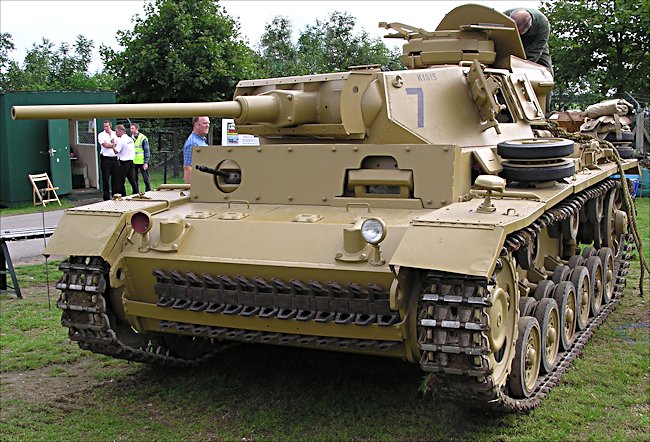
German Panzer III Ausf. L tank in Afrika Korps desert colours with extra armour on the upper hull but not yet on the lower slopping front armour plates.
Location
This German Panzer III Ausf. L Tank is on show at the Tank Museum, Linsay Road, Bovington, Dorset. The nearest train station is Wool Railway Station. You can walk the 2 miles to the Museum but there are not pavements along the country road and if you are travelling with children it can be dangerous. It takes 45 minutes by foot. There is an irregular bus service from Wool Station that will get you to the museum but they only come once an hour in the morning starting after 9.30.
The last bus back to the station from the Tank Museum is just after 13.45 which is really silly. There is no Sunday bus service. The easiest way to get to the museum from the train station is by taxi. They can be pre booked with Garrison Cars to meet you when your train arrives and pick you up for the return trip from outside the museum. Their phone number is 01929 463395
The upgraded Panzer III arrives in the Desert
By late January 1942 Ewrin Rommel’s Africa Korps in Libya is down to 228 tanks; 139 Panzer III and IV tanks and 89 Italian Army tanks. The British have more than 400 tanks including 160 Valentine tanks and more than 230 Crusader tanks. The British and Commonwealth 8th Army seemed to have the German and Italians at a disadvantage.
In his memoirs Rommel recorded, "It was clear to us that the British would try to destroy us with all the means at their disposal. Our southern flank lay wide open and they had a large choice of possible operations to choose from. A constant threat would hang over our supply lines. But the British would not have the chance of exploiting their opportunity for I had decided to strike first."
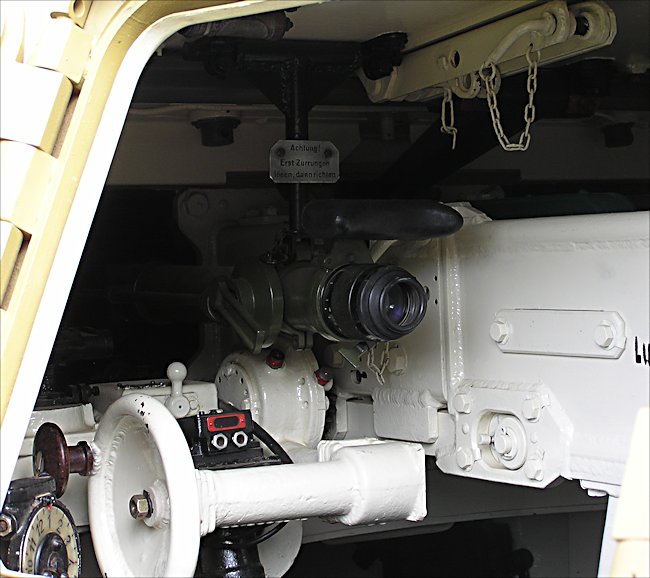
German Panzer III Ausf. L tank 50mm gun controls and sight.
The plan was typical of the ‘Desert Fox’. His Divisions would head south east from Mersa el Brega, into the unoccupied desert and then change direction east and then north-west to attack the 8th Army’s over extended flank.
Spearheading the German attack are formations of the German Panzer Mark III Ausf. J special. An upgraded version of the tank that fought in the Battle of France in 1940. It had 50mm of frontal armour not the original version’s 30mm and a new 50mm KwK 39 L/60 long barreled main cannon rather than the 37mm gun. It had a range of 650 meters which was much longer than the current British short barreled 2pdr guns. It meant they could engage and hit a British tank at long distance before they could shoot back. In early 1942 the British have nothing that powerful.
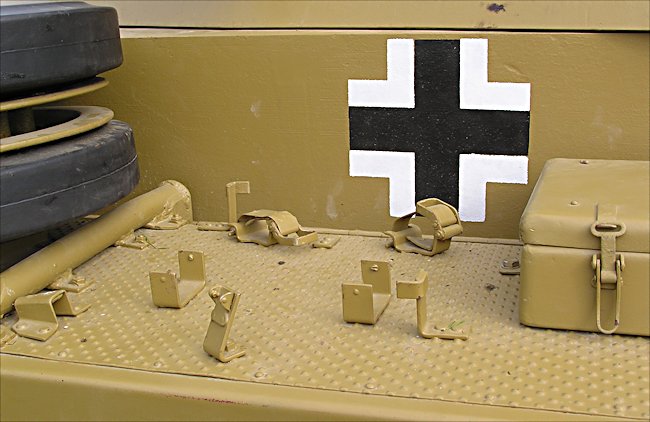
German Panzer III tank track mud guards provided additional storage options.
At that time the Crusader Mark IV cruiser tank was the most common British tank in use. It had a speed of 24km/h making it the fastest tank in the desert but the speed came at a deadly cost. It only had 32mm of armour plating making it very vulnerable to German anti-tank fire. Its light 40mm gun was all but useless against the panzer’s upgraded armour.
On 21st January 1942 Rommel attacks. Sgt Wilhelm Hagios was a member of a Panzer Mk III tank crew that day. It was part of the 15th Panzer Division. He recalls, "We went up a hill for a bit, just a few meters until we were on the plateau and there was an English Crusader tank squad. We opened fire. We destroyed two of their tanks at a distance of about 1,000 meters. Then we saw a crusader approaching our firing line from our right side trying to flank us."
"We stopped it when it was about 600 meters away. In the meantime the colonel was yelling over the radio, ‘shoot shoot to the left’. He had seen what we had missed. A M3 Grant tank was approaching from our left side. I turned the turret crank like crazy. Finally I had my sights on the tank. It filled my entire visual field, that is how close it was. I destroyed it with two shots and that danger was adverted." Their old 37mm gun would not have got through the M3 Grant Tank’s frontal armour.
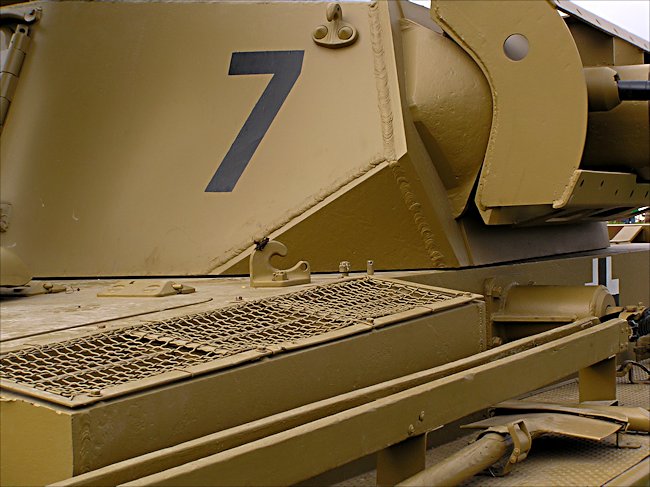
Tools and equipment were secured to the outside of the Panzer III tank
This tank was a big improvement of the German tanks that were fielded in February 1940. The Panzer Mark III Ausf A, B and C, had been withdrawn from service due to problems with the suspension and thin armour. On the 10th the may 1940. There were 348 Mark III's mainly model E and F but with a few G's deployed with seven Panzer Divisions taking part on the attack of France. All these Mark III tanks were only armed with the 37 mm anti-tank gun and two machine guns.
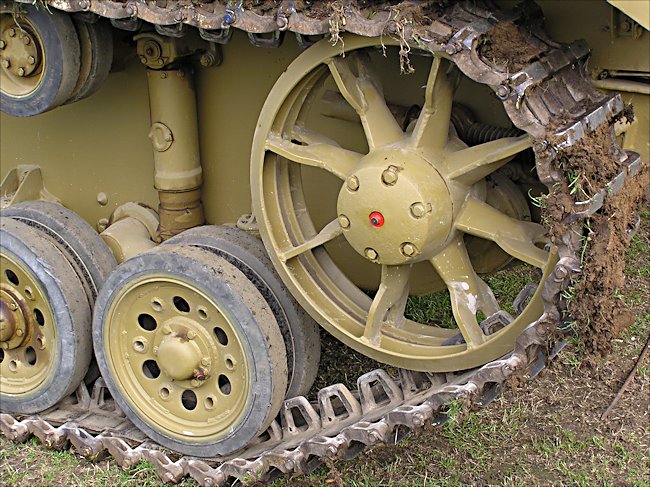
The Panzer III tank had six small double track wheels. The Panzer MkIV had eight.
The Panzer Mark III tanks were used to invade France in the 1940 blitzkrieg
Within a week of getting over the Meuse River, during the battle of France blitzkrieg seven German Panzer divisions had pierced the French defences. On 20 May 1940 German General Heinz Guderian's 19th Panzer Corps had reached the Channel west Abbeville. The German armoured divisions did not have it all their own way.
German tanks used in 1940 had big problems battling the French and British medium and heavy tanks. The guns fitted to their tanks, guns. Users anti-tank guns did not have enough penetration power to go through the allies frontal tank armour. The shells just bounced off.
By the time the forward units the German blitzkrieg offensive were gazing out over the English Channel at Abbeville many vehicles had suffered mechanical failure. They had lost over 40% of the strength. The Germans could have suffered a defeat if the allies had access to strategic reserves that were properly supplied with food, fuel, ammunition and good leadership.
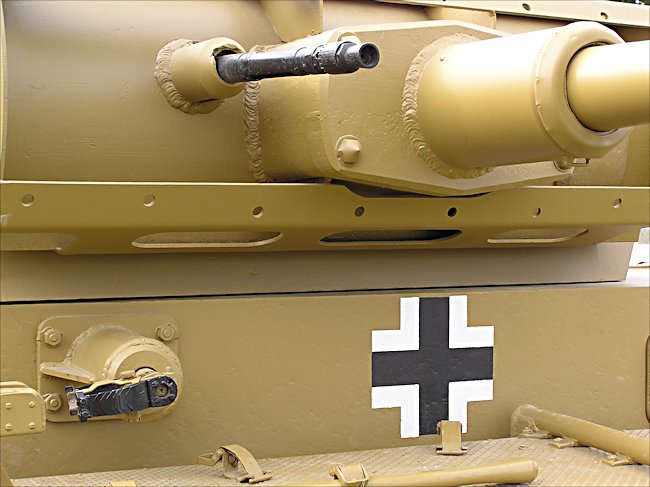
German Panzer III tank had a co-axial machine gun fitted by the side of the main gun.
In May 1940 German Sergeant Nokel was a Panzer III tank commander in the 5th Panzer Division. He had crossed the Belgium River Meues at Houx. The French counter attack appeared after a few days. He had heard of German tanks encountering the French heavy tanks and their crews being horrified as their shells bounced off the front armour of these monsters.
He recalls. "The tanks silhouettes were getting larger, and I was scared. Never before had I seen such huge tanks. My company commander gave clear instructions over the radio describing where to aim for on these tanks. News of a weak spot had been received. The enemy tanks were just just 200 metres away before he gave the order to fire."
"As if they had been hit by a bolt of lightning, three of the enemy tanks halted, their hatches opened and their crews jumped out, but some of the other tanks continued towards us, while some turned, presenting their side armour to us."
"On the right side of the Char BI tank there is an oil radiator behind an armoured grill. At this spot even our smaller Panzer II tanks 20mm guns could penetrate the armour. The French tanks went up in flames immediately if they were hit there."
"The information about the vulnerability of the enemy tanks was quickly circulated to all our tanks. Then we shot round after round into the French tanks. Within the fifteen minutes it took us to repulse the attack, 19 Char BI tanks were either burning or immobile."
WW2 tank books

